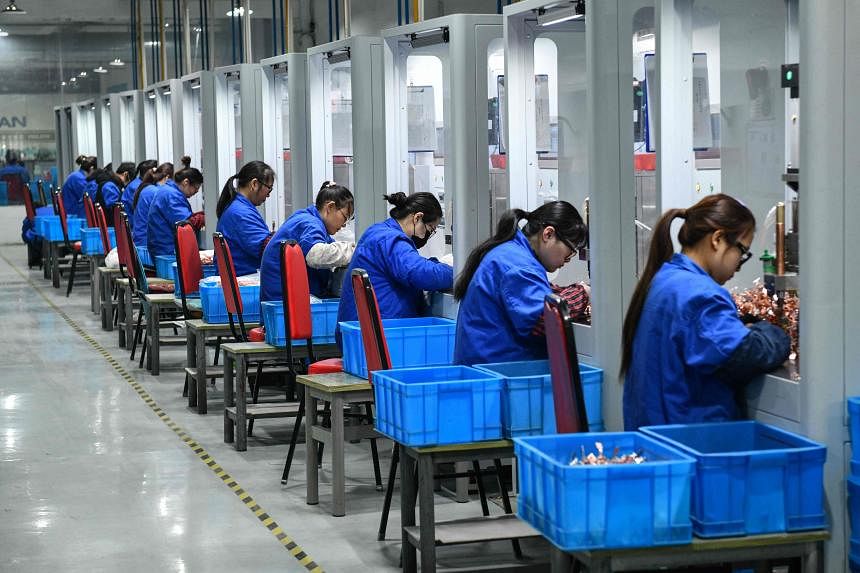BEIJING – China's factory activity contracted for the fourth straight month in January as new orders fell, suggesting weak demand continues to weigh on the economy ahead of the upcoming Lunar New Year holiday.
The Office for National Statistics said in a statement on January 31 that the official manufacturing purchasing managers index reached 49.2 this month, higher than December's reading but still below the 50 mark that separates expansion from contraction. Announced. This number was slightly worse than economists expected.
The index of non-manufacturing activity, which measures the construction and services sectors, was 50.7, up from the previous month and slightly above economists' expectations. The service activity sub-index rebounded to 50.1, expanding for the first time since October, but growth in construction slowed to the lowest level in three months.
“There's no sign of a turning point here,” said Galvin Chia, emerging markets strategist at NatWest Markets in Singapore. “The surprises are too small to change what is already a very deeply bearish view of the outlook.”
Market reaction to the PMI was muted, with the land benchmark CSI300 index slightly down in morning trading. Share prices of Chinese stocks listed in Hong Kong fell by as much as 1.1%. Both indexes are on the verge of erasing gains from last week, which were buoyed by hopes of more government support.
The offshore yuan was little changed, and China's 10-year government bond yield fell to 2.43%, the lowest since 2002. The Australian dollar, which is risk-sensitive and seen as a proxy for China, fell 0.6%.
The world's second-largest economy is looking to regain momentum this year after the government introduced some stimulus measures. These include measures such as increasing the release of long-term capital to banks, tightening regulations on stock lending for short sellers, and expanding access to financing for developers. Authorities stepped up their rhetoric last week in a bid to stem the collapse that has wiped out about US$6 trillion (about S$8 trillion) in stock market value.
NBS analyst Zhao Qinghe said in a statement accompanying the PMI release that although still in a contractionary trend, the slight rise in the manufacturing index “suggests that economic sentiment has improved to some extent.” Stated. Mr. Zhao pointed out that there are some positive signs in external demand, considering that the sub-gauge of new export orders increased to 47.2. Although this is the highest number in four months, it is still a significant contraction.
The beginning of the year is typically a slow period for manufacturing in the run-up to Lunar New Year, and next month there will be a week-long holiday during which factory activity is halted. Still, Jones-Lang's LaSalle chief economist Bruce Pang says the underperformance of the composite manufacturing index signals underlying weakness in the economy.
“Seasonality alone cannot fully explain the weakness in the manufacturing PMI,” he said. “Policy support to increase effective demand in society remains necessary to maintain a sustainable recovery.”
Economists expect the Chinese government to announce fairly ambitious growth targets for 2024 at the national parliament in March. The economy achieved the government's official growth target of about 5% last year, but it may be difficult to maintain the same growth rate in 2024.
The standard of comparison will be higher, and the economy will no longer benefit from the boost from the release of pent-up demand in the immediate aftermath of the pandemic. The main drag on growth is that the real estate recession shows no signs of ending and prices continue to fall. Trade tensions with major partners over key exports, including electric vehicles, are escalating, increasing the downside risks facing the economy.bloomberg

